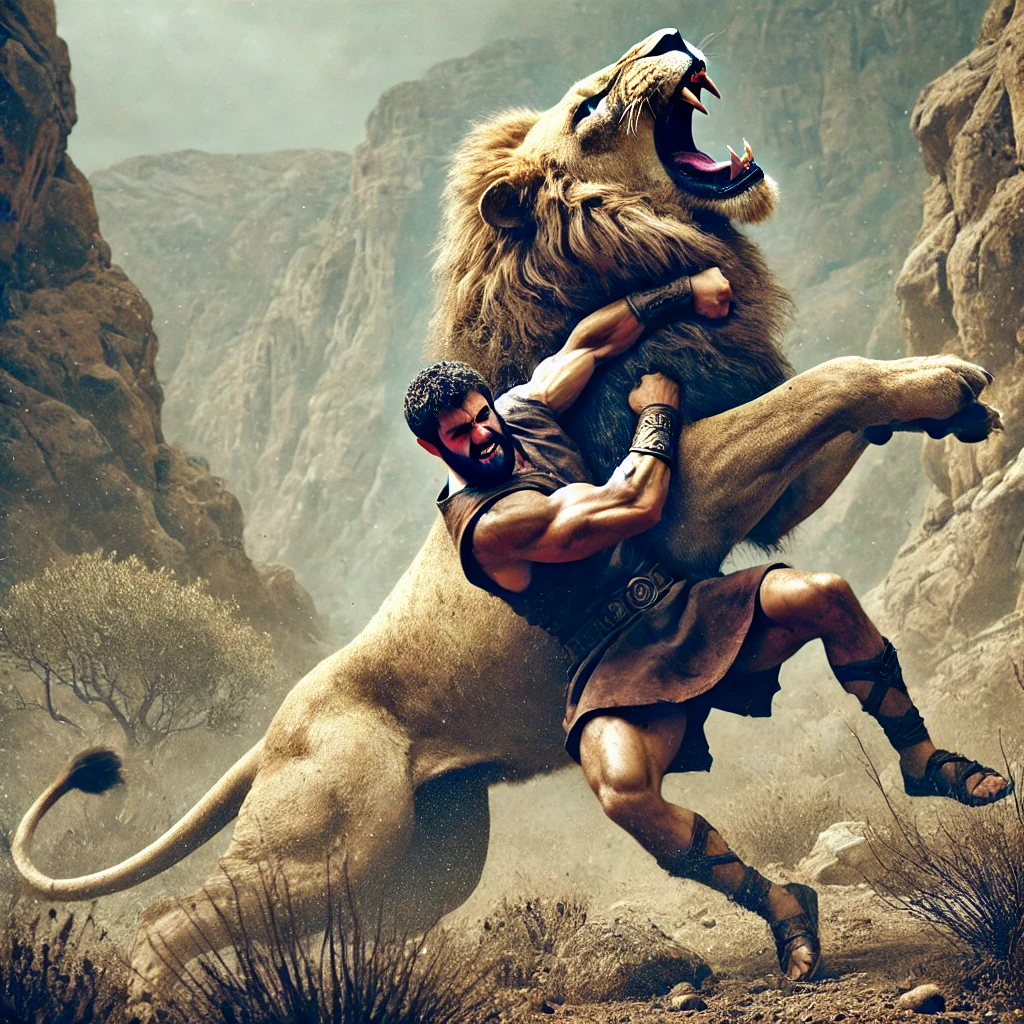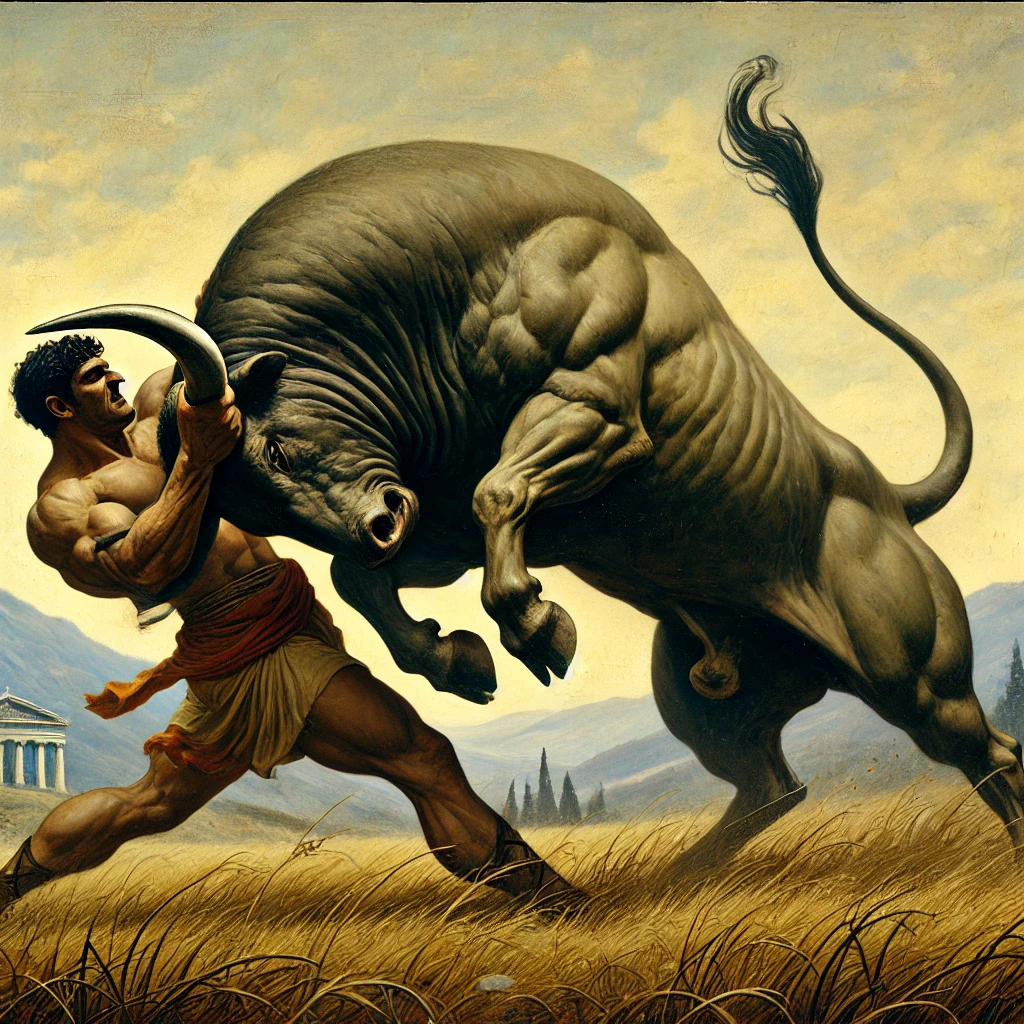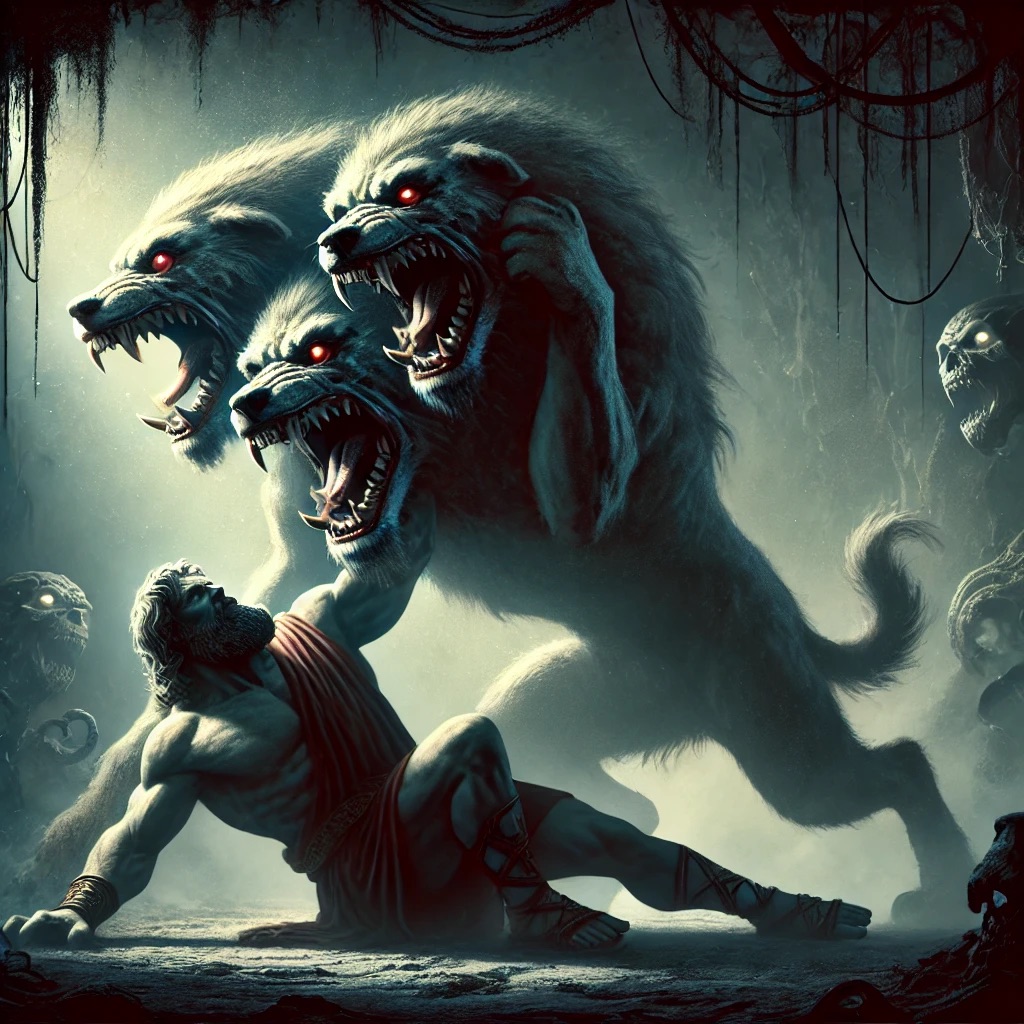Introduction: The Fate of a Hero
Heracles was a demigod born to Zeus and the mortal Alcmene. However, Zeus’ wife, Hera, despised Heracles, as he was the product of her husband’s infidelity. From the moment of his birth, Heracles suffered Hera’s wrath, facing numerous life-threatening trials. Yet, he was gifted with divine strength and unmatched bravery.
As an adult, Heracles married Megara, the queen of Thebes, and lived a happy life. However, Hera’s curse still loomed over him. One day, she drove him into madness, causing him to lose control and tragically kill his wife and children. When he regained his senses, he was overcome with grief and guilt. Seeking redemption, he consulted the Oracle of Delphi, who instructed him to serve King Eurystheus of Mycenae and complete twelve labors as a path to purification and divine forgiveness.
⸻
First Labor: The Nemean Lion
Heracles’ first task was to slay the great lion of Nemea, a beast terrorizing the region. This lion was blessed by the gods with impenetrable skin, making it immune to arrows and weapons.
At first, Heracles attempted to kill the lion with his bow and arrows, but they bounced off the beast’s hide. Realizing that weapons were ineffective, he decided to fight with his bare hands. He chased the lion into a cave, blocking one of its exits to trap it inside.
A fierce battle ensued. The lion pounced at Heracles, but he seized the beast’s throat with his immense strength and strangled it. The lion fought back violently, but Heracles’ grip never loosened. Eventually, the beast succumbed to his strength.
Afterward, Heracles skinned the lion and fashioned its hide into a cloak, using its sharp claws as a tool. From that moment on, the lion’s impenetrable hide became his signature armor.

⸻
Second Labor: The Lernaean Hydra
The second task was to defeat the monstrous Hydra, which resided in the swamp of Lerna. This serpent-like creature had multiple heads, and whenever one was severed, two more grew in its place. Additionally, its breath was poisonous, capable of killing any living being.
Heracles, accompanied by his nephew Iolaus, ventured into the swamp. As soon as the Hydra emerged, he began cutting off its heads, only to realize that more heads sprouted from the wounds. The battle seemed hopeless.
Iolaus devised a strategy: he set a torch ablaze and cauterized the Hydra’s necks immediately after Heracles decapitated each head. This prevented any new heads from growing. Finally, Heracles severed the immortal head of the Hydra and buried it deep underground. Before leaving, he dipped his arrows in the Hydra’s poisonous blood, making them deadly weapons for future battles.

⸻
Third Labor: The Ceryneian Hind
Heracles’ third labor was to capture the Ceryneian Hind, a sacred deer belonging to the goddess Artemis. This deer was incredibly fast, making it nearly impossible to catch.
Heracles pursued the deer for an entire year, patiently tracking and exhausting it. When the animal finally collapsed from fatigue, he gently captured it. However, on his way to present the deer to King Eurystheus, Artemis appeared and demanded its release.
To appease the goddess, Heracles promised to return the deer after presenting it to the king. True to his word, he released the animal immediately after fulfilling his task.

⸻
Fourth Labor: The Erymanthian Boar
Heracles’ next task was to capture the enormous Erymanthian Boar alive.
He chased the boar up a mountain, forcing it into deep snow during the winter. The boar struggled to move in the thick snow, allowing Heracles to seize it. He then carried the massive beast on his shoulders and presented it to the king.

⸻
Fifth Labor: Cleaning the Augean Stables
The fifth task required Heracles to clean the Augean Stables in a single day. These stables housed thousands of cattle and had accumulated years of filth, making the task seemingly impossible.
Instead of attempting to clean the waste manually, Heracles used his intelligence. He diverted the flow of two nearby rivers, channeling the water through the stables and washing away all the filth in mere hours. Despite completing the task, King Augeas refused to reward Heracles as promised and exiled him instead.

⸻
Sixth Labor: The Stymphalian Birds
A flock of man-eating birds, dedicated to the god Ares, terrorized the region of Arcadia.
Heracles used bronze rattles given to him by Athena to startle the birds into flight. Once airborne, he shot them down with his bow and arrow. The remaining birds fled, never to return.

⸻
Seventh Labor: The Cretan Bull
Heracles was tasked with capturing the mighty Cretan Bull, which was terrorizing the island of Crete. This bull had been sent by Poseidon and later driven mad, causing destruction.
Heracles wrestled the beast to the ground using his sheer strength and subdued it. He then transported it back to Mycenae. However, King Eurystheus, fearful of the bull’s power, set it free, leading to its eventual defeat by Theseus.

⸻
Eighth Labor: The Mares of Diomedes
King Diomedes owned a group of man-eating horses, which were known to devour human flesh.
Heracles and his men stole the horses under the cover of night, but Diomedes pursued them with his soldiers. In the ensuing battle, Heracles killed Diomedes and fed his body to the horses. Satiated, the horses became tame, allowing Heracles to lead them to Mycenae.

⸻
Ninth Labor: The Belt of Hippolyta
Heracles was sent to retrieve the golden belt of Hippolyta, queen of the Amazons.
Hippolyta, impressed by Heracles, initially agreed to give him the belt. However, Hera spread false rumors among the Amazons, claiming that Heracles was abducting their queen. This led to a fierce battle. Heracles was forced to kill Hippolyta and take the belt by force.

⸻
Tenth Labor: The Cattle of Geryon
Geryon, a monstrous giant with three bodies, owned a herd of magnificent red cattle. Heracles had to steal them.
After a long journey, Heracles arrived at Geryon’s land and battled him. Using a poisoned arrow dipped in Hydra’s venom, he slew Geryon and took the cattle back to Mycenae.

⸻
Eleventh Labor: The Golden Apples of the Hesperides
Heracles’ next challenge was to retrieve the golden apples from the garden of the Hesperides.
He sought the help of Atlas, who held up the sky. Heracles offered to bear Atlas’ burden if he would fetch the apples. Atlas agreed, but upon returning, he attempted to leave Heracles with the task of holding up the sky. However, Heracles tricked him into taking the burden back and escaped with the apples.

⸻
Twelfth Labor: Capturing Cerberus
Heracles’ final task was to capture Cerberus, the three-headed guard dog of the Underworld.
Hades permitted Heracles to take Cerberus, provided he subdued it without weapons. Heracles wrestled the beast into submission and brought it to Mycenae before returning it to the Underworld.

⸻
Conclusion: The Apotheosis of Heracles
Having completed all twelve labors, Heracles was forgiven by the gods and ascended to Olympus, where he was granted immortality.
'그리스 신화 정리 > Greek Myth_story' 카테고리의 다른 글
| The Abduction of Persephone and Demeter’s Grief (0) | 2025.03.11 |
|---|---|
| Dionysus: The God of Wine and Joy (2) | 2025.03.09 |
| Pandora’s Box: The First Woman and Humanity’s Misfortune (2) | 2025.03.06 |
| Prometheus and the Creation of Humanity: The Fire Thief’s Story (2) | 2025.03.03 |



